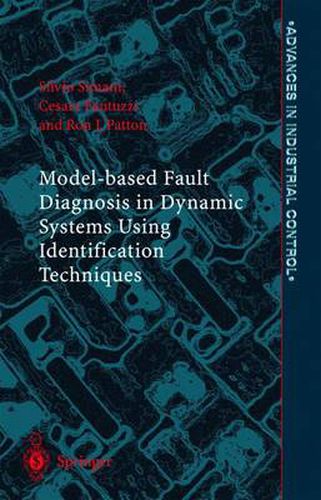Readings Newsletter
Become a Readings Member to make your shopping experience even easier.
Sign in or sign up for free!
You’re not far away from qualifying for FREE standard shipping within Australia
You’ve qualified for FREE standard shipping within Australia
The cart is loading…






This title is printed to order. This book may have been self-published. If so, we cannot guarantee the quality of the content. In the main most books will have gone through the editing process however some may not. We therefore suggest that you be aware of this before ordering this book. If in doubt check either the author or publisher’s details as we are unable to accept any returns unless they are faulty. Please contact us if you have any questions.
Safety in industrial process and production plants is a concern of rising importance, especially if people would be endangered by a catastrophic system failure. On the other hand, because the control devices which are now exploited to improve the overall performance of industrial processes include both sophisticated digital system design techniques and complex hardware (input-output sensors, actuators, components and processing units), there is an increased probability of failure. As a direct consequence of this, control systems must include automatic supervision of closed-loop operation to detect and isolate malfunctions as early as possible. One of the most promising methods for solving this problem is the analytical redundancy approach, in which residual signals are obtained. The basic idea consists of using an accurate model of the system to mimic the real process behaviour. If a fault occurs, the residual signal, i.e., the difference between real system and model behaviours, can be used to diagnose and isolate the malfunction. This book focuses on model identification oriented to the analytical approach of fault diagnosis and identification. The problem is treated in all its aspects covering: choice of model structure; parameter identification; residual generation; fault diagnosis and isolation. Sample case studies are used to demonstrate the application of these techniques. Model-based Fault Diagnosis in Dynamic Systems Using Identification Techniques will be of interest to researchers in control and fault identification. Industrial control engineers interested in applying the latest methods in fault diagnosis will benefit from the practical examples and case studies.
$9.00 standard shipping within Australia
FREE standard shipping within Australia for orders over $100.00
Express & International shipping calculated at checkout
This title is printed to order. This book may have been self-published. If so, we cannot guarantee the quality of the content. In the main most books will have gone through the editing process however some may not. We therefore suggest that you be aware of this before ordering this book. If in doubt check either the author or publisher’s details as we are unable to accept any returns unless they are faulty. Please contact us if you have any questions.
Safety in industrial process and production plants is a concern of rising importance, especially if people would be endangered by a catastrophic system failure. On the other hand, because the control devices which are now exploited to improve the overall performance of industrial processes include both sophisticated digital system design techniques and complex hardware (input-output sensors, actuators, components and processing units), there is an increased probability of failure. As a direct consequence of this, control systems must include automatic supervision of closed-loop operation to detect and isolate malfunctions as early as possible. One of the most promising methods for solving this problem is the analytical redundancy approach, in which residual signals are obtained. The basic idea consists of using an accurate model of the system to mimic the real process behaviour. If a fault occurs, the residual signal, i.e., the difference between real system and model behaviours, can be used to diagnose and isolate the malfunction. This book focuses on model identification oriented to the analytical approach of fault diagnosis and identification. The problem is treated in all its aspects covering: choice of model structure; parameter identification; residual generation; fault diagnosis and isolation. Sample case studies are used to demonstrate the application of these techniques. Model-based Fault Diagnosis in Dynamic Systems Using Identification Techniques will be of interest to researchers in control and fault identification. Industrial control engineers interested in applying the latest methods in fault diagnosis will benefit from the practical examples and case studies.